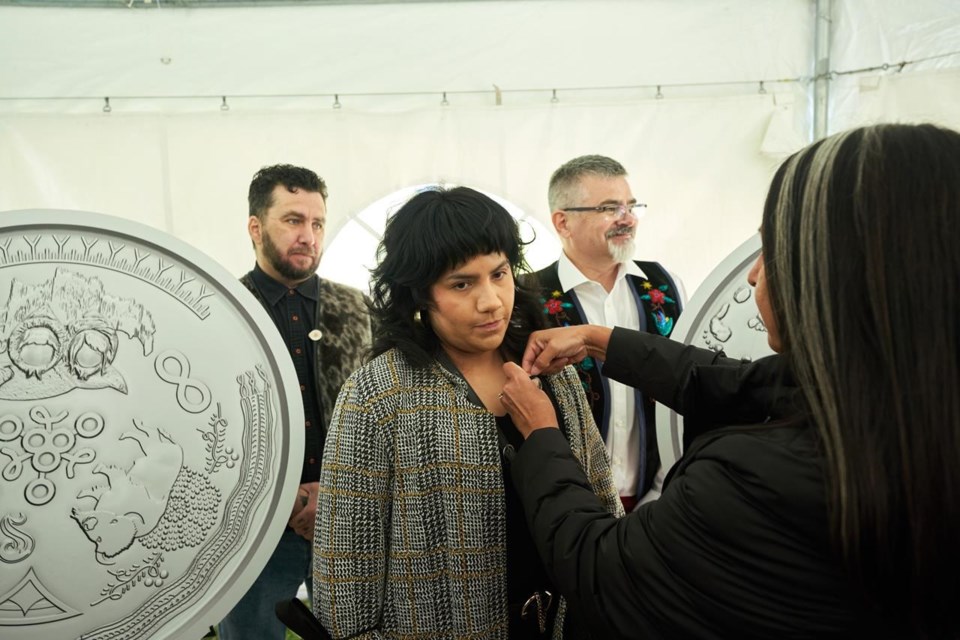WINNIPEG — The experiences of residential school survivors are woven together with First Nations, Inuit and Métis teachings and traditional art forms that were stripped from students in the design of a new commemorative coin unveiled at a special ceremony Thursday.
The Royal Canadian Mint teamed up with the National Centre for Truth and Reconciliation, Indigenous artists and survivors to create a keepsake that acknowledges the truths and traumas behind the residential school system.
"For far too long, the terrible harms committed by the residential school system were not shared. The children (were) made to feel ashamed … they were ignored," said Stephanie Scott, executive director of the centre.
"This keepsake acknowledges the truth. More than that, it does so through the voices and the vision of the survivors themselves."
The two-sided coin, which can be displayed or worn, was designed collaboratively by Cree artist Leticia Spence, Inuk artist Jason Sikoak and MĂ©tis artist JD Hawk. The trio consulted survivors.
Eugene Arcand said working with the designers and the Mint gave survivors the space to share their truths without fear of embarrassment, shame or blame.
Arcand is Cree from Muskeg Lake First Nation in Saskatchewan. He spent a total of 11 years attending the St. Michael Indian Residential School and the St. Paul's Lebret Students Residence in Saskatchewan.
The discovery of what are believed to be 215 unmarked graves at a former school site in Kamloops, B.C., last year woke up the country to the atrocities Indigenous children and their families faced, said Arcand.
"For years we'd been sharing our stories, and nobody believed us. The 215 validated that we were telling the truth. We can never forget that."
He said the release of the keepsake, a little more than a week before the second annual l National Day for Truth and Reconciliation, is part of a larger push to educate the public and help heal intergenerational wounds.
On one of side of the coin, "Every Child Matters" is written in English and French. Footprints appear on each side, representing ancestors walking with younger generations. In the centre, orange handprints form the shape of a sun.
The three artists created a collection of symbolic elements that form an expression of Indigenous cultures and perspectives on the other side of the coin.
Traditional tattoo line work, the northern lights and an ulu, a curved knife used in the North, represent Inuit.
The MĂ©tis sash, floral beadwork and a bison represent the MĂ©tis Nation.
A teepee, two women holding a cradle board, or tikanagan, and the sun are used to represent First Nations rights, culture and teachings.
Spence, who is from Pimicikamak Cree Nation, said she drew on her grandmother's experiences of being raised by a family member in her design: "That idea of matriarchal love, and the love that a child feels."
Spence added residential schools altered the way Indigenous Peoples showed love and affection, so she wanted to imagine a world where this wasn't the case with her design.
Marie Lemay, president and CEO of the Mint, hopes Canadians can wear the keepsake with pride.
"It will be a signal of their willingness to walk the path to reconciliation."
Proceeds from the coin will go to the Na-mi-quai-ni-mak Community Support Fund established by the National Centre for Truth and Reconciliation. The fund assists survivors and their communities carry out healing and commemoration activities.
This report by The Canadian Press was first published Sept. 22, 2022.
Brittany Hobson, The Canadian Press




